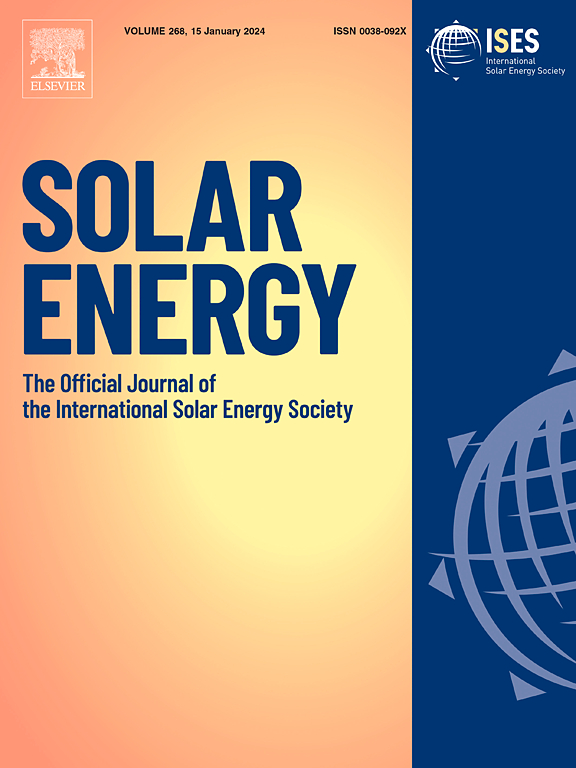Performance investigation of multilayer-layers solar cell based in ZnS-CZTSSe
IF 6
2区 工程技术
Q2 ENERGY & FUELS
引用次数: 0
Abstract
Researchers are investigating a range of materials to increase conversion efficiency, minimize the use of hazardous materials, and lower manufacturing costs because of the development of thin-film solar cells. To evaluate performance without wasting materials, one promising method is to modify solar cell materials, parameters, dimensions, and other factors using simulation tools. In this article, a mathematical model that incorporates both theoretical and experimental solar irradiance spectra is presented for thin-film solar cells based on copper zinc tin sulfo-selenide (CZTSSe). Four important performance metrics—open-circuit voltage, short-circuit current density, conversion efficiency, and fill factor—are assessed using the model, which is implemented using the Maple software. Considering different layer thicknesses, these metrics are examined for a ZnO/CdS/CZTSSe solar cell. Characteristic curves for current–voltage and power-voltage are also examined. The computations take into consideration the effects of surface dust on the diode as well as both ideal and actual representations of the solar cell. The findings show that adding a CdS buffer layer considerably enhances every performance metric and that, for every metric, the real diode model represents performance more accurately than the ideal model. The results also show that the cell has highest efficiency of 13.6.277 % at energy gap of CZTSSe (E2 = 1.4 eV). In addition, results show that solar cell performance depredates as dust accumulate on its surface emphasizing the importance of cleaning the solar cell surface to maintain high performance.
基于ZnS-CZTSSe的多层太阳能电池性能研究
由于薄膜太阳能电池的发展,研究人员正在研究一系列材料,以提高转换效率,最大限度地减少有害物质的使用,并降低制造成本。为了在不浪费材料的情况下评估性能,一种有前途的方法是使用模拟工具修改太阳能电池的材料、参数、尺寸和其他因素。本文建立了基于铜锌锡硫硒化薄膜太阳能电池的理论与实验相结合的太阳辐照光谱数学模型。使用Maple软件实现的模型评估了四个重要的性能指标——开路电压、短路电流密度、转换效率和填充因子。考虑不同的层厚,对ZnO/CdS/CZTSSe太阳能电池的这些指标进行了测试。研究了电流电压和功率电压的特性曲线。计算考虑了表面尘埃对二极管的影响,以及太阳能电池的理想和实际表现。研究结果表明,添加CdS缓冲层大大提高了每个性能指标,并且对于每个指标,实际二极管模型比理想模型更准确地表示性能。结果还表明,在CZTSSe (E2 = 1.4 eV)能隙下,电池效率最高,达到13.6.277%。此外,研究结果表明,由于灰尘在太阳能电池表面积聚,太阳能电池的性能下降,强调清洁太阳能电池表面以保持高性能的重要性。
本文章由计算机程序翻译,如有差异,请以英文原文为准。
求助全文
约1分钟内获得全文
求助全文
来源期刊

Solar Energy
工程技术-能源与燃料
CiteScore
13.90
自引率
9.00%
发文量
0
审稿时长
47 days
期刊介绍:
Solar Energy welcomes manuscripts presenting information not previously published in journals on any aspect of solar energy research, development, application, measurement or policy. The term "solar energy" in this context includes the indirect uses such as wind energy and biomass
 求助内容:
求助内容: 应助结果提醒方式:
应助结果提醒方式:


